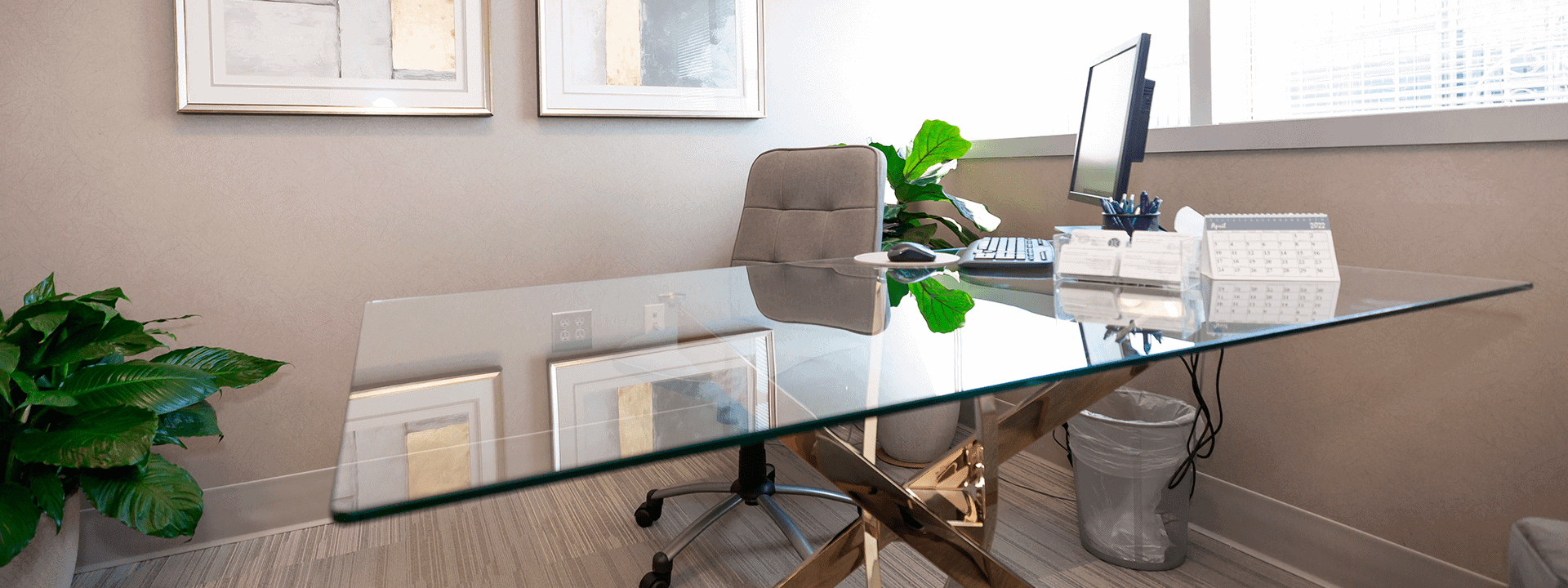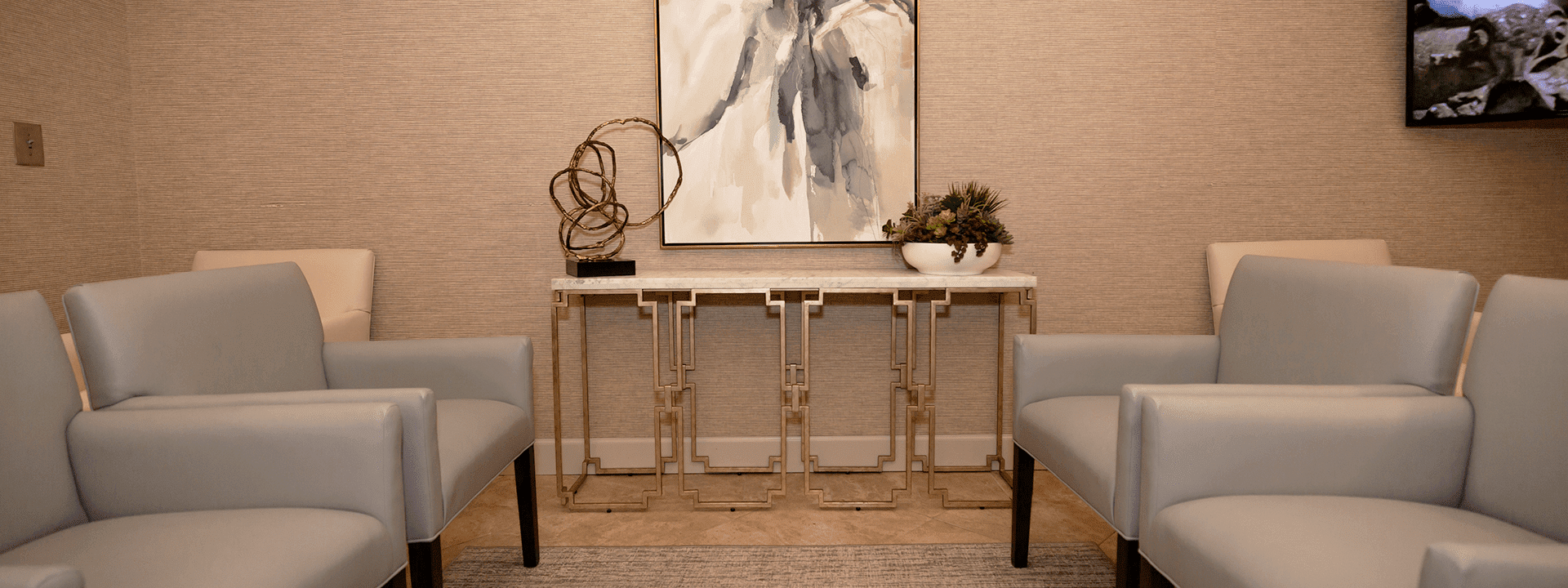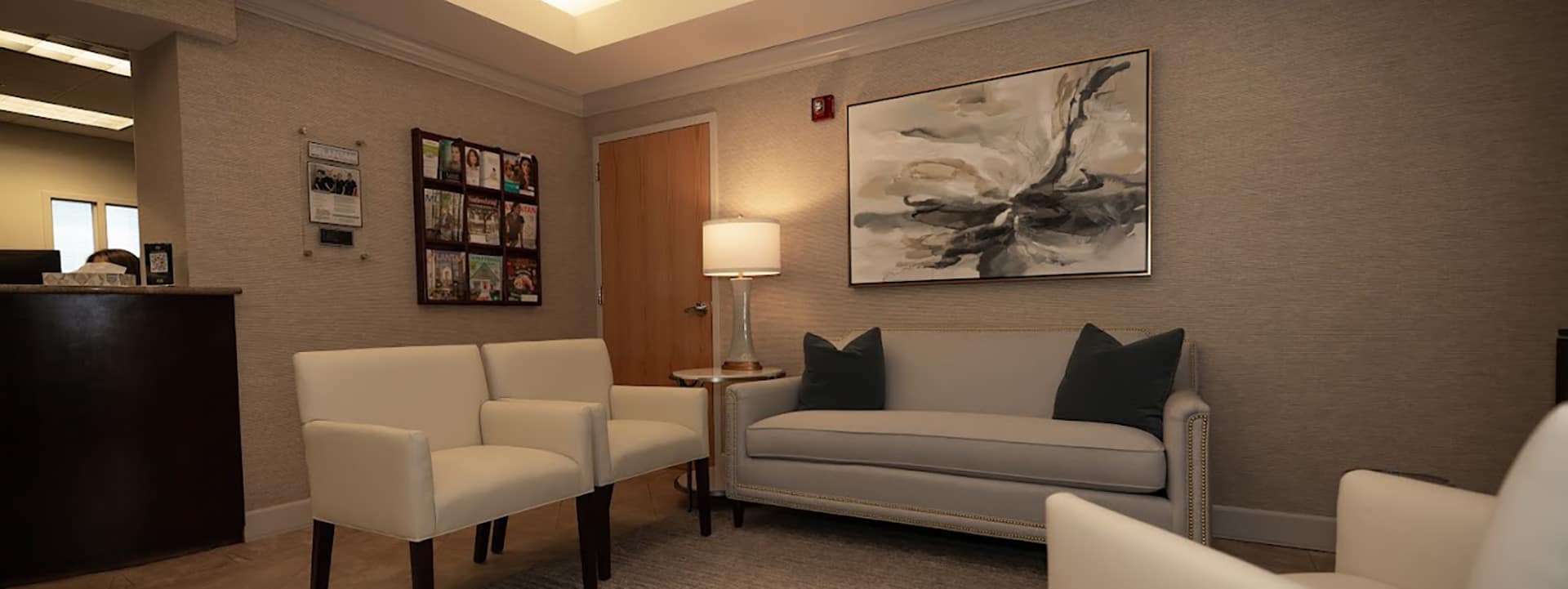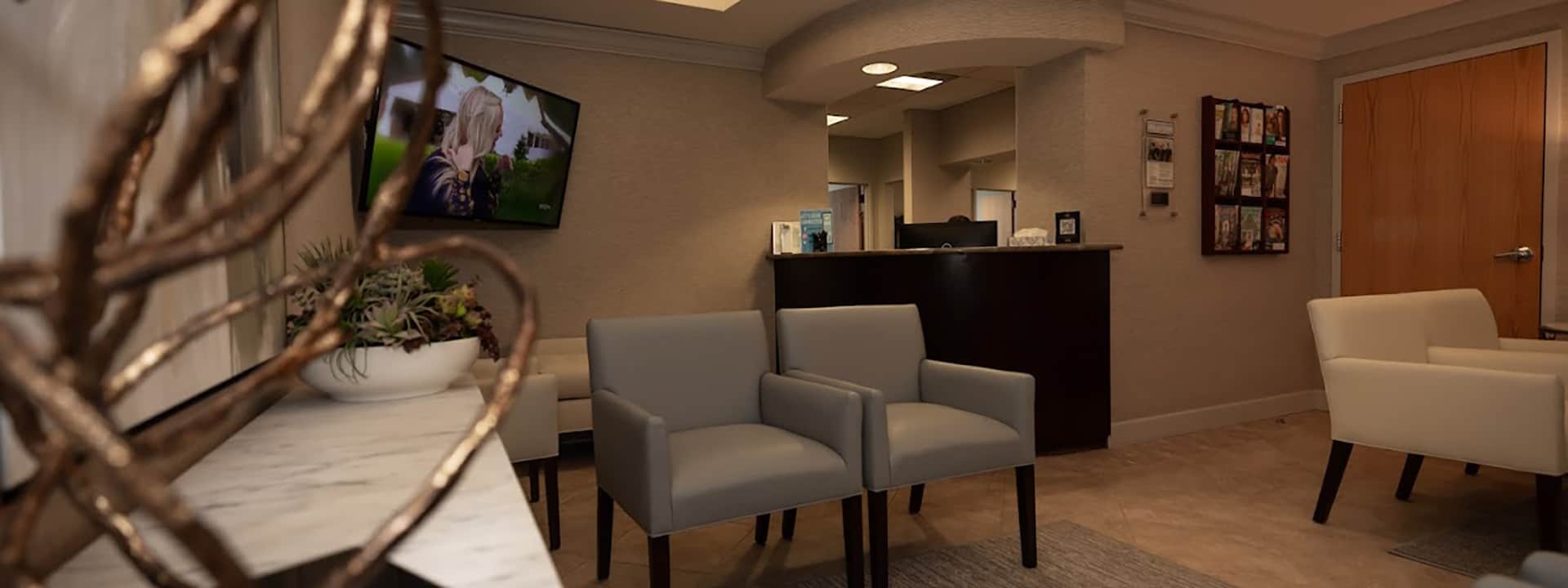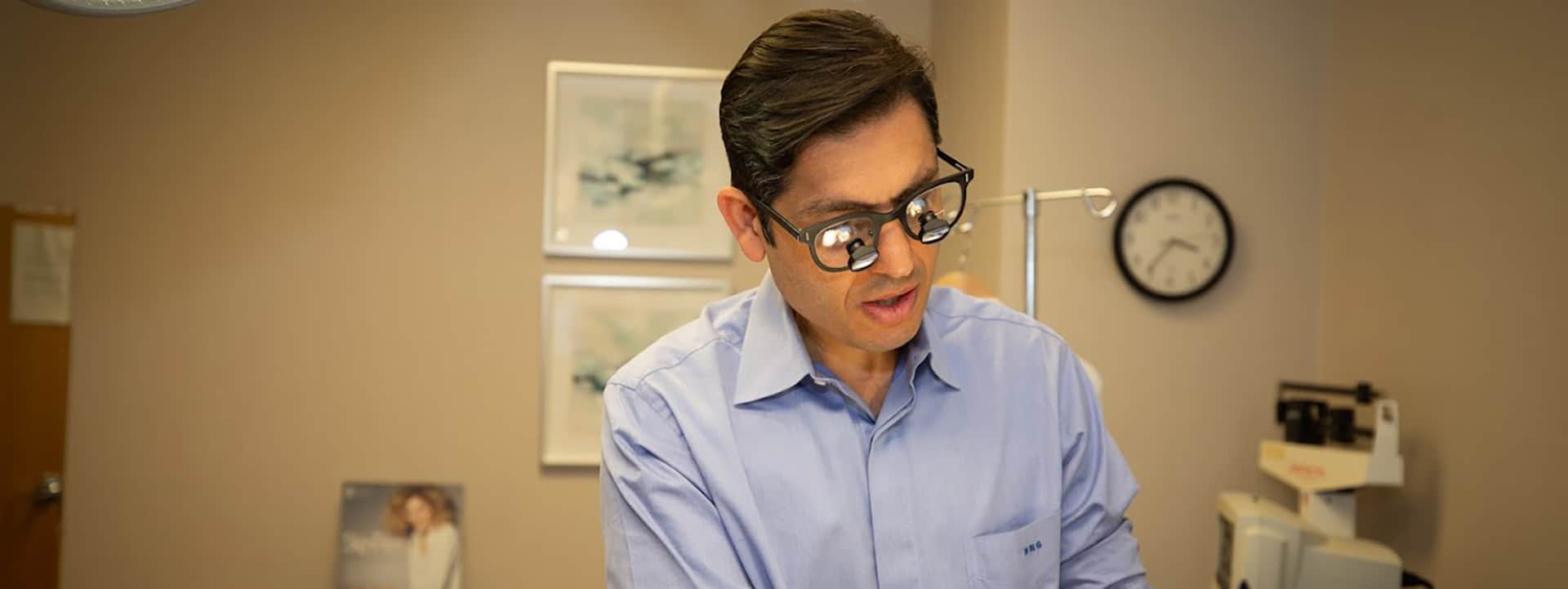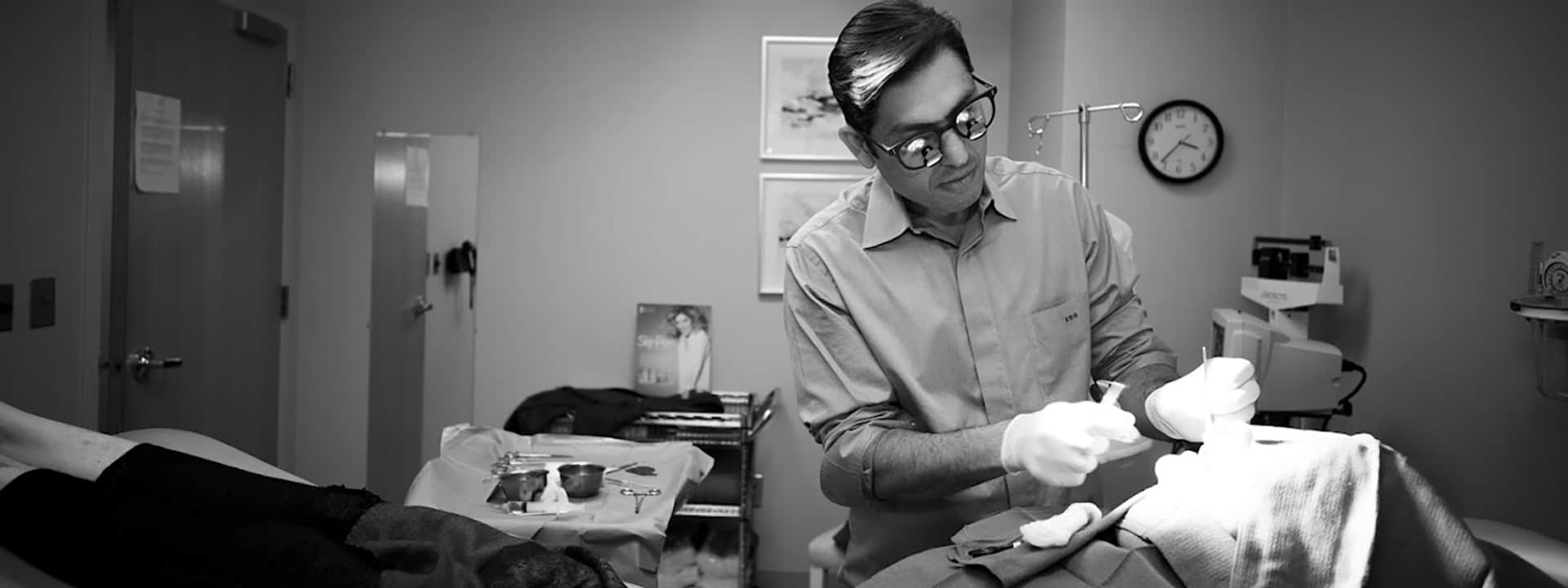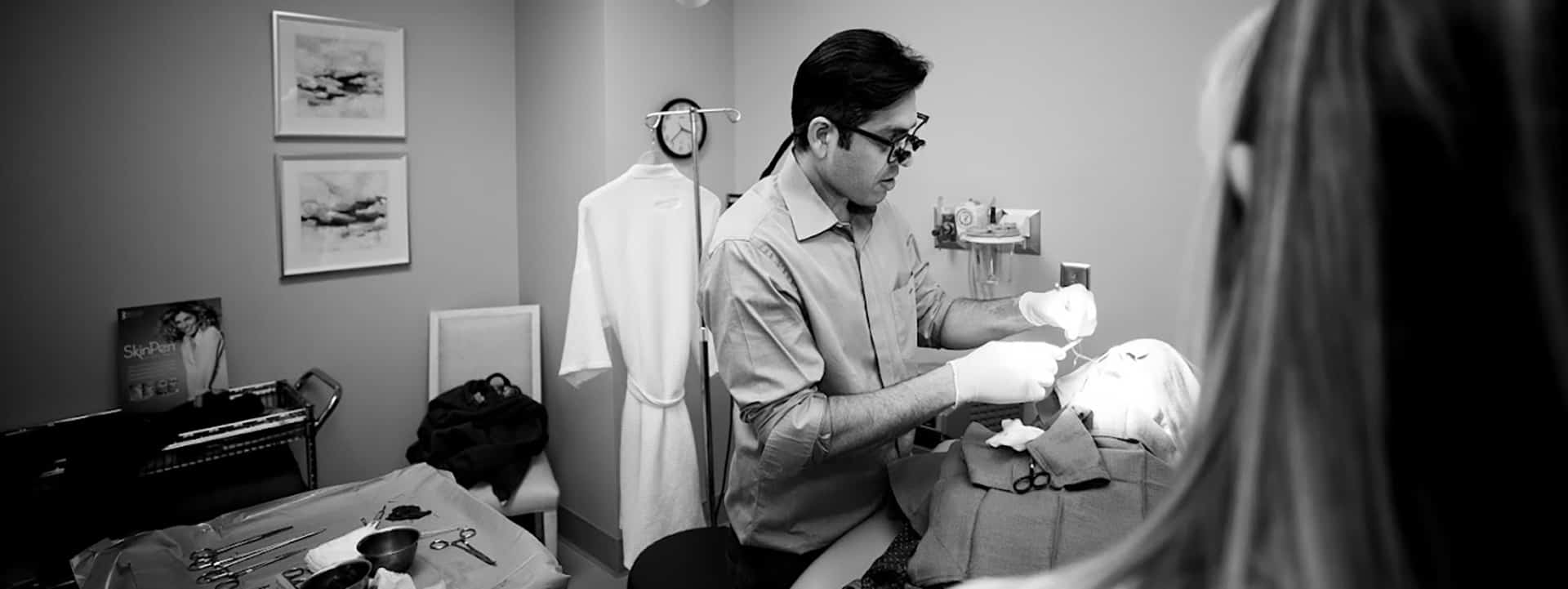Rhinoplasty & Deviated Septums
In addition to the aesthetic results that many patients seek, a nose job is one of the best solutions for patients looking to deal with a deviated septum, which can cause breathing issues that can adversely affect daily life. The nasal septum is the wall that separates the two nostrils from one another. Patients who experience problems with the nasal septum, either from birth or accidental damage, have a condition known as a deviated septum. Problems with the nasal septum can create health problems for the patient. Some of the most common issues associated with a deviated septum are:
- Breathing Problems: A deviated septum can make breathing difficult for people. Improper breathing can lead to sleep problems and a lethargic feeling.
- Increased Congestion: Patients who suffer from a deviated septum often experience higher levels of congestion; which, in turn, can create even more breathing problems and lead to more frequent illness.
- More Frequent Nosebleeds: Patients who suffer from a deviated septum are more prone to nosebleeds.
- More Frequent Sinus Infections: An increase in sinus infections is a common side effect of having a deviated septum. Sinus issues can impede breathing and lead to frequent headaches.
Different Demographics & Rhinoplasty
Rhinoplasty is done across all ethnic groups, ages, and in both sexes. Since each population segment has its own desire and motive for the procedure, surgeons must consider the unique needs and aesthetic values of each demographic when performing a rhinoplasty. In Caucasian patients, a dorsal hump may be removed with tip refinement. African American patients often desire tip refinement, alar base reduction and dorsal augmentation. Asian or Latino patients may need a combination of the above. An older patient will have different needs than a teenager. Sometimes, special situations come into play. A traumatically injured nose is handled differently than one associated with a cleft lip or palate. Every case is unique.
Complementary Procedures
Rhinoplasty may also be combined with other facial procedures, most commonly with chin surgery. The chin is treated with either a chin implant or advancement genioplasty. This combination tends to balance the face and both procedures enhance one another. These considerations are typically noted during the initial patient consultation. This consultation often includes a morphing of the patient’s photographs, allowing the patient to get an idea of what the change may look like. During your consultation, you will explore options, preview potential results, and ultimately to determine the proper course of action.
Atlanta Plastic & Reconstructive Specialists Approach to Rhinoplasty
Read a blurb in which our board-certified rhinoplasty specialist Dr. Donald Nunn discusses his personal approach to nose surgery in detail:
“Rhinoplasty is a challenging procedure for surgeons, requiring a high degree of finesse and aesthetic judgment. It is also an extremely rewarding procedure for the patient, and as a result, one of the most popular. Rhinoplasty improves the balance of facial features, corrects structural defects, and helps men and women achieve increased satisfaction with their facial appearance. It is no wonder that rhinoplasty is the second most popular cosmetic surgical procedure in the United Sates, with over 220,000 procedures performed in 2013. There are two main surgical techniques for rhinoplasty: the open technique and the closed technique. The majority of cosmetic surgeons in the US use the open technique, which I also prefer. The open technique affords a wide range of visibility of the nose’s anatomy and allows the surgeon many procedural options for alteration. Rhinoplasty does not have a set series of steps; it is different for each patient. Depending on the patient’s anatomy and goals for the procedure, this is how a rhinoplasty shapes up for me:
- The open technique begins with a small skin incision in the columella (the tissue between the nostrils), followed by additional incisions hidden inside the nose. Using these incisions, I lift the skin off of the nasal cartilages for increased exposure of the internal nasal anatomy. After the skin is opened, I direct my attention to the septum, which I treat through the same approach. I generally straighten the septum and remove some cartilage that I later use to graft various areas of the nose. I take care to leave adequate septal cartilage for nasal support and strength.
- Once the septum is completed, I will trim some of the lower cartilages of the nose that make up the nostril rims. Trimming this cartilage allows narrowing and shaping of the nasal tip. At this time, I address the bridge of the nose. Oftentimes patients desire a hump reduction. If a large hump is removed, we insert spreader grafts (pieces of cartilage harvested from the septum) to open the internal nasal airway. This also helps contour the nasal bridge by producing a smooth continuous contour, and it improves symmetry in some cases.
- Next, I generally shape the lower nasal cartilages. I employ a variety of suture techniques to narrow, lift, project or otherwise address what is needed for that particular case. During this time, I use some of the remaining cartilage from the septum to control the position of the nasal tip by securing it in place.
- After tip is complete, I narrow the bony framework of the nose with osteotomy bone cuts that I perform with a small chisel. This lets me narrow and shape the bony portions of the nose. Many cases require reduction of the turbinates (the internal bone and soft tissues of the nose) using several different techniques. This helps to open the airway.
- I close the wounds with removable stitches in the columella and dissolving stitches on the interior. I use splints internally to secure the septum—and externally to hold the nasal bones in place.
Rhinoplasty is done on an outpatient basis, unless additional procedures are necessary or the patient’s medical condition requires additional overnight monitoring. Patients can expect swelling, drainage of blood and mucus, and sometimes black and blue discoloration of the eyelids. One week post-surgery, I see the patient for suture and splint removal. The technique I use depends on the patient’s anatomy, the specifics of their how their procedure was performed, and their desires. Rhinoplasty is a truly custom surgery with no two cases exactly alike. If you are considering modifying the appearance of your nose, I encourage you to schedule a consultation to assess your options.”
Recovery After Rhinoplasty
You can generally expect to wear some type of splint on the nose for about a week to stabilize tissues. The patient may have bruising around the nose itself and under the eyes for up to two weeks. This discoloration will dissipate gradually. Some amount of swelling may be visible for up to six weeks. Improvement will continue over several months. The final recovery from a nose job result of the surgery will take up to a year to show itself as fluids leave the tissues and the skin settles over the underlying structures.
- Avoid Medications That Promote Bleeding Your physician will provide the proper pain medication to keep you comfortable after your rhinoplasty procedure. Avoid taking aspirin or ibuprofen, which can cause delayed bleeding of the surgery site. Other medications such as gingko, St. Johns wort and vitamin E can also promote bleeding and should be avoided during the recovery period.
- Avoid Strenuous Activity Your surgeon will instruct you to avoid vigorous physical activity during the recovery period. This will help to reduce excessive blood flow to tissues while they are healing. Limit your activities to work duties and social activities for at least six weeks.
- Stay Hydrated Staying well hydrated is important for the healthiest of people, and even more important for recovery from surgical procedures. Drink plenty of healthy fluids such as fruit juices, clear broths, Jello, Gatorade and water.
- Elevate the Head When Lying Down Use two or three pillows to elevate your head when lying down. This will prevent the flow of blood to the head that will cause tender tissues to swell. As healing progresses, you will gradually be more comfortable lying flat.
- Don’t Smoke Smoking causes dilation of the blood vessels that can impede proper healing. This might be a good time to begin your smoking cessation to heal faster after surgery and to stay healthy to enjoy your new, improved appearance.
Contact Us
If you feel embarrassed by the appearance of your nose, contact Atlanta Plastic & Reconstructive Specialists for help. Call us to schedule an informational rhinoplasty consultation.








